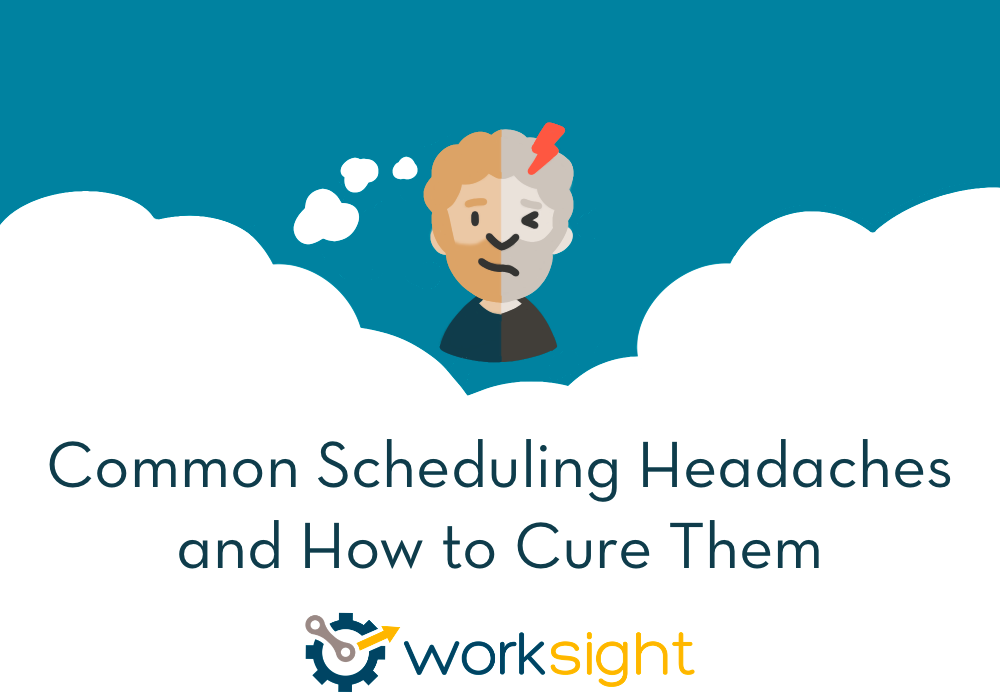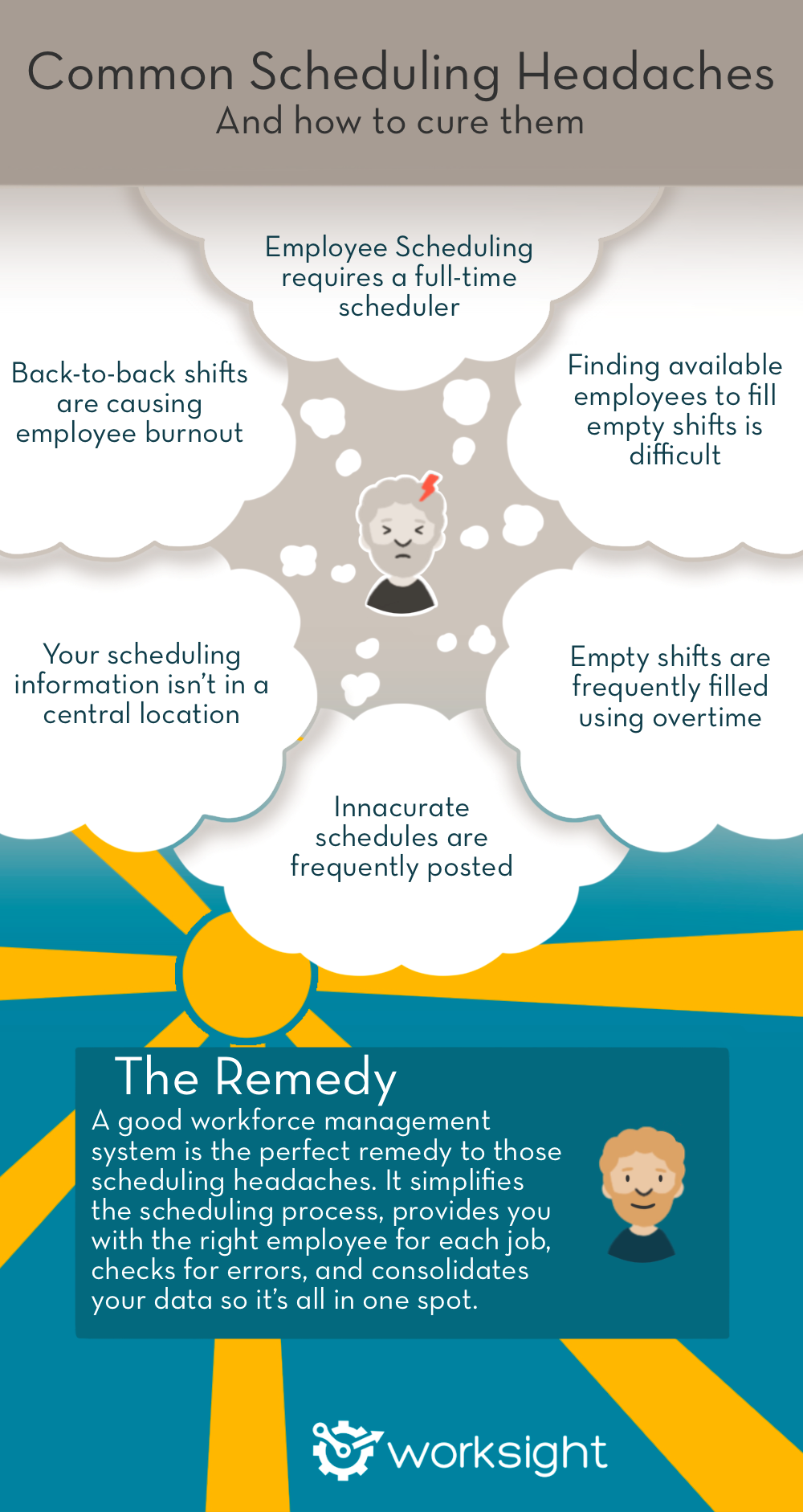Common Scheduling Headaches and How to Cure Them Infographic
With over 20 years of experience in the workforce management industry, we are well aware that employee scheduling can sometimes be a headache-inducing task. We’ve highlighted some of the most common headache causes below, and provide you with a suggestion on how to treat them!

With over 20 years of experience in the workforce management industry, we are well aware that employee scheduling can sometimes be a headache-inducing task. We’ve highlighted some of the most common headache causes below, and provide you with a suggestion on how to treat them!
1. Employee scheduling requires a full-time scheduler
Every time your company grows, an extra shift and person have been added. Preparing, posting, and updating the weekly schedule in addition to vacation planning is no longer a quick and easy task and soon becomes a full-time job for at least one employee.
2. Finding available employees to fill empty shifts is challenging
When vacant shifts appear, you need to get them filled as soon as possible by the best employee available. As you build your weekly schedule or your yearly vacation plan, finding available and qualified employees becomes more and more difficult like a game of Tetris.
3. Empty shifts are frequently filled using overtime
Building off of our last point, when an employee calls in sick you would like to fill the vacancy with a qualified straight time replacement and move the resulting overtime to a lower-paying position. However, on short notice, you can’t find a qualified straight time replacement, so you fill the vacancy by holding a senior employee over on overtime, costing your company more money.
4. Inaccurate schedules are frequently displayed
Errors are common in manually created schedules. There are repeated corrections, amendments, and re-postings of the work schedule and your employees now view it as a rough guide. This leads to multiple requests for changes as per the employee’s preferences and it is difficult to encourage an ordered and responsible approach to staff deployment.
5. Your scheduling information isn’t in a central location
What a mess! Your record of employee job qualifications is in numerous supervisor spreadsheets and post-it notes. Seniorities and their date ranges are in the HR system. Occupation rates are in the Payroll System. Employee special skills don’t seem to be recorded anywhere and vacation planning is carried out on an old in-house system.
6. Back-to-back shifts are causing employee burnout
Employees are complaining of burnout and they are not exaggerating; the Institute for Work and Health (IWH) reports that there is strong evidence that rotating and irregular shifts are associated with worker fatigue and an increased risk of occupational injury.
The Remedy
A good workforce management system is the perfect remedy to those scheduling headaches. If simplifies the scheduling process, provides you with the right employee for each job, checks for errors, and consolidates your data so it’s all in one spot!

